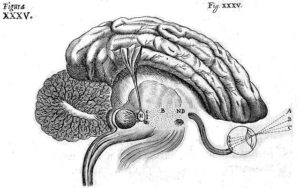Caught In The Sympathetic Nervous System
The human nervous system is the engine that facilitates the workings of the body.
There are many divisions within the nervous system.
The Central Nervous System (CNS) is the brain and spinal cord.
The peripheral nervous system (PNS) is all the nerves that emanate from the spinal cord to the rest of the body.
There are further divisions of the PNS that include the somatic nervous system (SoNS) and the autonomic nervous system (ANS).
The nervous system takes stock of everything around and within you and generates physical responses as it deems necessary.
We have control over many divisions of the nervous system (SoNS)— I am willing my fingers to tap the keys as I write and if I wanted to I could correct the horrible posture that I am employing in my very expensive chair that doesn’t teach me how to sit.
The parts of the nervous system that we don’t have control over fall within ANS that operates to keep us functioning without conscious involvement.
Your heart beats, your intestines digest, your liver processes –all through the workings of the ANS.
Homeostasis, the body’s internal search for balance, falls under the purview of yet another division of the ANS, the sympathetic and parasympathetic nervous systems.
The parasympathetic nervous system facilitates relaxation while the sympathetic nervous system initiates excitation.
The body is always searching for a balance between these two poles of excitation and relaxation.
If I am driving in my car and I hear a screech of brakes behind me, my body goes on alert tensing up and preparing for something bad to happen.
As a result the sympathetic nervous system kicks in.
But then I see in my rearview mirror that the car behind me was able to stop and with the crisis averted I feel my whole body relax.
That’s the smooth functioning of the parasympathetic and sympathetic nervous systems.
 No two people are going to react to that stimulus in the same way.
No two people are going to react to that stimulus in the same way.
For some once the car behind stops and the danger is averted we can let it go and move on.
But for others the fear and worry that was brought up by the screeching car stays around for a good while before the body can relax.
Now let’s say that I am a soldier out on a night patrol—in this case my sympathetic nervous system turns on to a heightened state to keep me safe, and will stay on until the patrol is over and I feel safe.
The same approach applies to the car accident.
Some people can handle the dance of these two systems better than others.
For some the vacillation between the parasympathetic and sympathetic nervous system is fluid and effortless, while other more sensitive people have a hard time coming down from the initiation of the sympathetic nervous system.
Most often this is when it is employed too often and for too long.
Getting a cold is a breeze– hang in there for about ten days and you’ll get better.
The flu, while more powerful than a cold, follows a similar trajectory. You feel sick, you are sick and you will get better.
When something is off in the balance of the sympathetic nervous system and parasympathetic nervous systems there isn’t necessarily a way to feel it as such and someone can suffer for a long time without any concrete idea about what ails them.
Trauma is a broad term and every individual has a different capacity for processing traumatic events both big and small.
Some things can happen– car accidents are a prime example- where the trauma unleashed upon the body is too great to process in the moment, and the body will “store” these emotions/ sensations until there is a better environment for release.
Many animals understand this instinctively and have coping techniques — the porcupine in danger waits for the danger to pass, then rolls onto its back and runs in place until all of the nervous energy is gone.
Human beings and our thinking brains don’t always grasp this intuitively and as a result the unprocessed event remains locked in the body.
This is what it means to be caught in the sympathetic nervous system. Living in a body loaded with unprocessed energy and no means to let it out.
Luckily, there are ways to find ease if you understand what you are going through and employ simple basic techniques like the pose in the video above.

